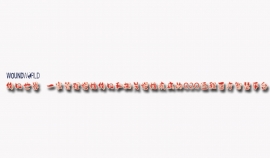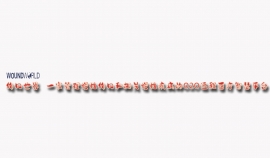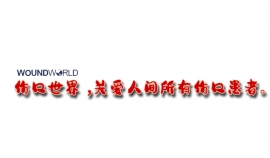文献精选
张晓嫚,满 喜*
内蒙古师范大学体育学院,运动生物力学实验室,内蒙古 呼和浩特
Email: * 该Email地址已收到反垃圾邮件插件保护。要显示它您需要在浏览器中启用JavaScript。
收稿日期:2021年1月25日;录用日期:2021年2月28日;发布日期:2021年3月9日
文章引用: 张晓嫚, 满喜. 基于红外热像仪恢复期偏瘫患者下肢健侧和患侧差异分析[J]. 体育科学进展, 2021, 9(1): 1-9. DOI: 10.12677/aps.2021.91001
摘 要
目的:观察偏瘫患者下肢健侧与患侧的温度差异,并且分析可能导致出现这种差异现象的原因,提出相应的解决方法,为偏瘫患者的临床护理与治疗提供一定的理论支持和专业指导。方法:本文将应用ATIR-M301红外热像仪采集47名偏瘫患者下肢健侧和患侧的温度图像,并应用ATIR-M301红外热像仪自带的温度图像分析软件对偏瘫患者下肢的温度图像进行分析,得出数据,并对采集的数据进行统计学检验。结果:偏瘫患者下肢健侧温度与患侧温度比较有统计学意义(P < 0.05)。结论:偏瘫患者下肢健侧温度与患侧温度有差异,患侧温度比健侧温度低1℃~1.5℃。
关键词
红外热像仪,偏瘫,患侧温度,健侧温度,差异对比
Based on the Difference and Analysis between the Healthy Side and the Affected Side of the Lower Extremity of Patients with Hemiplegia during Convalescence by Infrared Thermography
Xiaoman Zhang, Xi Man*
Lab of Sports Biomechanics, Institute of Physical Education, Inner Mongolia Normal University, Hohhot Inner Mongolia
Email: * 该Email地址已收到反垃圾邮件插件保护。要显示它您需要在浏览器中启用JavaScript。
Received: Jan. 25th, 2021; accepted: Feb. 28th, 2021; published: Mar. 9th, 2021
Abstract
Objective: To observe the temperature difference between the healthy side and the affected side of the lower limbs of patients with hemiplegia, and analyze the possible causes of this difference, and propose the corresponding solutions, so as to provide certain theoretical support and professional guidance for the clinical nursing and treatment of patients with hemiplegia. Methods: In this paper, ATIR-M301 infrared thermal imager was used to collect the temperature images of the healthy side and the affected side of the lower limbs of 47 patients with hemiplegia, and the temperature image analysis software of ATIR-M301 infrared thermal imager was used to analyze the temperature images of the lower limbs of patients with hemiplegia, obtain the data, and conduct statistical test on the collected data. Results: The comparison between the healthy side temperature and the affected side temperature of the lower limbs in patients with hemiplegia was statistically significant (P < 0.05). Conclusion: In the patients with hemiplegia lower temperature and with the contralateral side temperature difference, the same temperature is lower than the contralateral temperature 1˚C~1.5˚C.
Keywords
Infrared Thermal Imager, Hemiplegia, Affected Side Temperature, Healthy Side Temperature, Differences in Contrast
Copyright © 2021 by author(s) and Hans Publishers Inc.
This work is licensed under the Creative Commons Attribution International License (CC BY 4.0). http://creativecommons.org/licenses/by/4.0/
Feiyi Zhang1, Yijia Jessica Li2, Limei Zhou3, Lepei Gao3, Hong Li3, Le Qi4, Fahui Yang3*
1 Youth League Committee of Southwest University, Chongqing, China
2 Department of Psychology, University of Calgary, Calgary, Canada
3 Faculty of Psychology, Southwest University, Chongqing, China
4 Chongqing City Management College, Chongqing, China
Email:★该Email地址已收到反垃圾邮件插件保护。要显示它您需要在浏览器中启用JavaScript。
How to cite this paper: Zhang, F., Li, Y. J., Zhou, L., Gao, L., Li, H., Qi, L., & Yang, F. (2021). The Mental Health Implications of a Local Epidemic: Early Experience with the COVID-19 Outbreak in Wuhan, China. Psychology, 12, 107-119. https://doi.org/10.4236/psych.2021.121007
Received: December 17, 2020
Accepted: January 18, 2021
Published: January 21, 2021
Copyright © 2021 by author(s) and Scientific Research Publishing Inc. This work is licensed under the Creative Commons Attribution International License (CC BY 4.0). http://creativecommons.org/licenses/by/4.0/
Abstract
Purpose: This article presents national survey data related to the mental health of participants (N = 13,824) from every province in the People’s Republic of China, in the period of early February, during the early days of the outbreak of the COVID-19 virus. The goal was to examine stress and anxiety levels, even as the virus was spreading across the country. This goal was facilitated by data collected specifically from Wuhan city, which was the geographical epicenter of the outbreak, Hubei, the province in which Wuhan is located, and the rest of China.
Methods: The survey included a series of validated measures of mental health, as well as measured constructs such as stress and anxiety, depression, sleep, workplace wellness and social cohesion. To the extent possible, the measures had been previously validated in China and were available in Simplified Chinese, although some measures were created for the unique characteristics of the viral outbreak. The survey was distributed electronically through a network of researchers.
Results: The measures were generally reliable, with expected inter-correlations. The factor structure of the Symptom Checklist-90 items was generally consistent with its conceptual dimensions. Mostly importantly, the study revealed a gradient of mental health outcomes, with participants from the city of Wuhan having the highest scores on most mental health measures, with the great Hubei province similar or slightly lower, and the rest of China having elevated, but lower scores on most outcomes. Sleep disturbance also revealed a similar gradient, with participants in the epicenter reporting the most sleep disturbance.
Discussion: These results reveal the ability to capture the mental health of citizens during a viral outbreak, and the sensitivity of measures to the mental challenges such an outbreak brings. The gradient of responses revealed the spreading effect of the COVID-19 outbreak, and suggests that worse mental health is highly likely to be an outcome as a pandemic spreads. These results suggest that health officials need to attend to not only the physical and direct effects of a viral pandemic, but also to the importance of the mental health of their citizens.
Keywords: Mental Health, Local Epidemic, COVID-19, Wuhan
杨 榕1 ,思 飞2 ,李宜橙1 ,李 明3*
*通讯作者。
1 延安大学附属医院,陕西 延安 2 中国人民解放军总医院京东医疗区,北京 3 延安大学附属医院烧伤整形手外科,陕西 延安
Email:该Email地址已收到反垃圾邮件插件保护。要显示它您需要在浏览器中启用JavaScript。,*liming9816@163.
收稿日期:2021年1月7日;录用日期:2021年1月29日;发布日期:2021年2月19日
摘 要
负压封闭引流技术(VSD)是临床上引入的一种治疗急、慢性创面的处理技术。目前认为VSD在创面修复中与透明质酸的代谢、CD44的表达、巨噬细胞趋化、肉芽组织生长等机制有关。上述机制相互促进,使创面愈合时间明显缩短,有效改善创面愈合处的色素沉着,尽量减少或避免对皮肤美观度的影响。本文将对负压封闭引流技术在针对临床应用中的生物机制加以研究,希望对后期创面修复及诊疗效果提供一定指导意义。
关键词: 负压封闭引流,创面修复,透明质酸,巨噬细胞,肉芽组织
文章引用: 杨榕, 思飞, 李宜橙, 李明. 负压封闭引流技术在临床应用中生物机制研究[J]. 临床医学进展, 2021, 11(2): 490-496. DOI: 10.12677/acm.2021.112070
Study on Biological Mechanism of Vacuum Sealing Drainage in Clinical Application
Rong Yang1, Fei Si2, Yicheng Li1, MingLi3*
1 Affiliated Hospital of Yan’an University, Yan’an Shaanxi
2 People’s Liberation Army General Hospital Jingdong Medical Area, Beijing
3 Department of Burn Plastic Surgery, Affiliated Hospital of Yan’an University, Yan’an Shaanxi
Abstract
Vacuum sealing drainage (VSD) is a clinically introduced treatment technology for acute and chronic wounds. It is currently believed that VSD is related to hyaluronic acid metabolism, CD44 expression, macrophage chemotaxis, granulation tissue growth and other mechanisms in wound repair. The above mechanisms promote each other, shorten the healing time of the wound, effectively improve the pigmentation at the wound healing, and minimize or avoid the influence on the skin appearance. This article will study the biological mechanism of negative pressure sealing drainage technology in clinical application, hoping to provide a certain guiding significance for later wound repair and diagnosis and treatment.
Keywords: Vacuum Sealing Drainage, Wound Repair, Hyaluronic Acid, Macrophagocyte, Granulation Tissue
Copyright © 2021 by author(s) and Hans Publishers Inc.
This work is licensed under the Creative Commons Attribution International License (CC BY 4.0).
http://creativecommons.org/licenses/by/4.0/
刘亚平,晁生武*
*通讯作者。
青海大学附属医院烧伤科,青海 西宁
Email:*该Email地址已收到反垃圾邮件插件保护。要显示它您需要在浏览器中启用JavaScript。.
收稿日期:2021年7月16日;录用日期:2021年8月13日;发布日期:2021年8月20日
文章引用: 刘亚平, 晁生武. 负压伤口滴注疗法治疗慢性难愈性创面的研究进展[J]. 临床医学进展, 2021, 11(8):
3562-3567. DOI: 10.12677/acm.2021.118520
摘 要
负压伤口滴注疗法(NPWTi)是负压伤口疗法(NPWT)进一步的发展,近年来广泛应用于各种慢性难愈性创面,该技术的实用性及疗效也受到临床医师的认可。本文通过归纳概括NPWTi的作用机制,总结NPWTi的最新国内外研究进展,分析该技术的优点及可能存在的问题,旨在为慢性难愈性创面的治疗提供思路与帮助。
关键词: 负压伤口滴注疗法,冲洗治疗,难愈性创面,作用机制
Research Progress of NPWTi in the Treatment of Chronic Refractory Wounds Yaping Liu, Shengwu Chao*
Department of Burns and Plastic Surgery, Qinghai University Affiliated Hospital, Xining Qinghai
Received: Jul. 16th, 2021; accepted: Aug. 13th, 2021; published: Aug. 20th, 2021
Abstract
Negative-pressure wound therapy with instillation (NPWTi) is a further development of negative
pressure wound therapy (NPWT). In recent years, it has been used in various chronic refractory wounds. The practicality and efficacy of this technology have also been recognized by clinicians.
This article generalizes the mechanism of NPWTi, summarizes the latest research progress of NPWTi at home and abroad, analyzes the advantages and potential problems of the technology, aiming to provide ideas and help for the treatment of chronic refractory wounds.
Keywords: Negative-Pressure Wound Therapy with Instillation, Instillation Therapy, Refractory Wounds, Mechanisms
Copyright © 2021 by author(s) and Hans Publishers Inc.
This work is licensed under the Creative Commons Attribution International License (CC BY 4.0).
http://creativecommons.org/licenses/by/4.0/



